





3-D Design
Isabel Cleary
Detroit Country Day School|Beverly Hills, Michigan
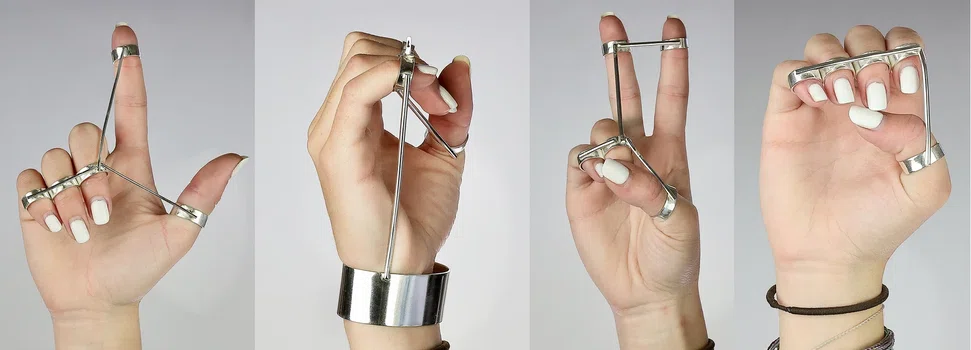
LOVE|5 x 12 x 2 in.
Material(s): Silver rings to capture the finger, silver wire as forced connections between the rings.
Process(es): Forging and creating rings, intertwining wire and rings together through heat and pressure.
Curatorial Note: Strong connections with movement of the body with jewelry. Through the process of creating metal jewelry the student connects sign language with fashionable jewelry pieces.


“As you move, the jewelry moves with the body. But is it possible to manipulate the body into language? By forcing the hand into cultural icons known as emojis or letters and words through American Sign Language the jewelry becomes concepts.”

Student statement
Student
statement
My works were all focused on the theme of love. The works related to the questions that guided my sustained investigation by showcasing that it is possible to use jewelry to manipulate the body into language. Throughout my portfolio process, I experimented with different shapes and ways to connect the rings together using metal. I revised my work away from focusing on jewelry and how it moves on the body and started focusing on how it can restrict body movement instead. My pieces sign out the word love, and lots of jewelry is used to commemorate love. Rings are used for engagements, promises, weddings, etc. Jewelry has historically been used in relationships to show love.

Isabel Cleary
Height: 3 in. Width: 4 in. Depth: 1 in.
Material(s): Silver rings to capture the finger, silver wire as forced connections between the rings.
Process(es): Forging and creating rings, intertwining wire and rings together through heat and pressure.

Teacher statement
Teacher
statement
Jiro Masuda
Isabel’s portfolio was a journey through practice, experimentation, and revision. Her initial inquiry question focused on how jewelry moves on the body when worn and how that movement changes the experience from viewing to wearing. Her initial pieces, while lovely, only addressed the interface with the body in a direct manner and she was a little underwhelmed with them. During our weekly check-in meeting, we discussed different ways jewelry could affect the human body. We also discussed symbols, social media, and emojis, which became the genesis of the ASL line of jewelry. She created two rings that forced the index finger and the thumb to make the shape of the heart emoji or symbol seen in photos on social media. Her genius in forcing the body into a static sculpture with the jewelry immediately resonated with her peers, encouraging her to dive deeper into this line of inquiry. One of the conversations in the group discussion centered on how American Sign Language (ASL) could become the bridge between jewelry, narrative and social commentary. Historically, rings had always held a specific connotation when it came to the topic of love, and the narrative became even more interesting because these structures force the hand into making the letters L, O, V, and E. Essentially, these pieces became a modern interpretation of the gilded cage.
All of her practice, experimentation, and in the end, revision of her entire line of inquiry occurred during the fall semester of her senior year. The AP class worked together using a critique model on their written response to the first prompt. Each student would present their response to the group, and the group, armed with the rubric, would collectively agree upon the Row A score point. Then the entire group would provide suggestions and help edit the response until the group agreed that it achieved the three score point. The same process was used for the second writing prompt in January after a body of work had been created that focused on the inquiry statement. During the semester, there were weekly checks on progress and a group critique of finished work halfway through the semester.
Each AP student submitted a Scholastic Art portfolio in December, which served as a trial run of their sustained investigation. Based on that feedback, new work was developed in the second semester. The second semester was also dedicated to editing their Materials, Processes, and Idea(s) statements, emphasizing addressing why students made the choices they did in those three areas with each piece. The AP Art and Design course is the capstone course of our Conservatory in Visual Arts program, and their capstone experience is our Celebrate the Arts event held on the last Sunday in April. Students designed and installed their displays with assistance from the Visual Arts faculty and received feedback from the audience which visited the exhibition.
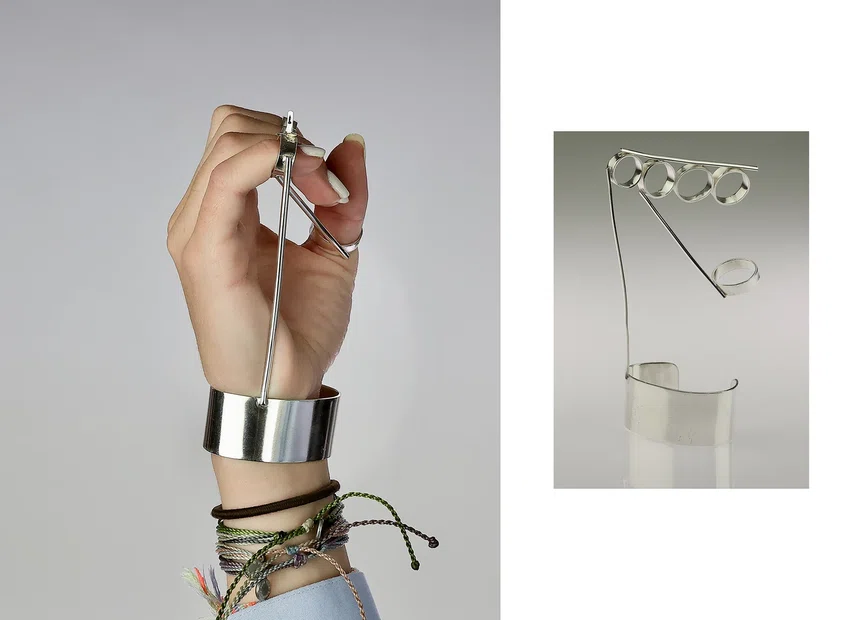
Height: 5 in. Width: 3 in. Depth: 2 in.
Material(s): Silver rings to capture the finger, silver wire as forced connections between the rings.
Process(es): Forging and creating rings, intertwining wire and rings together through heat and pressure.
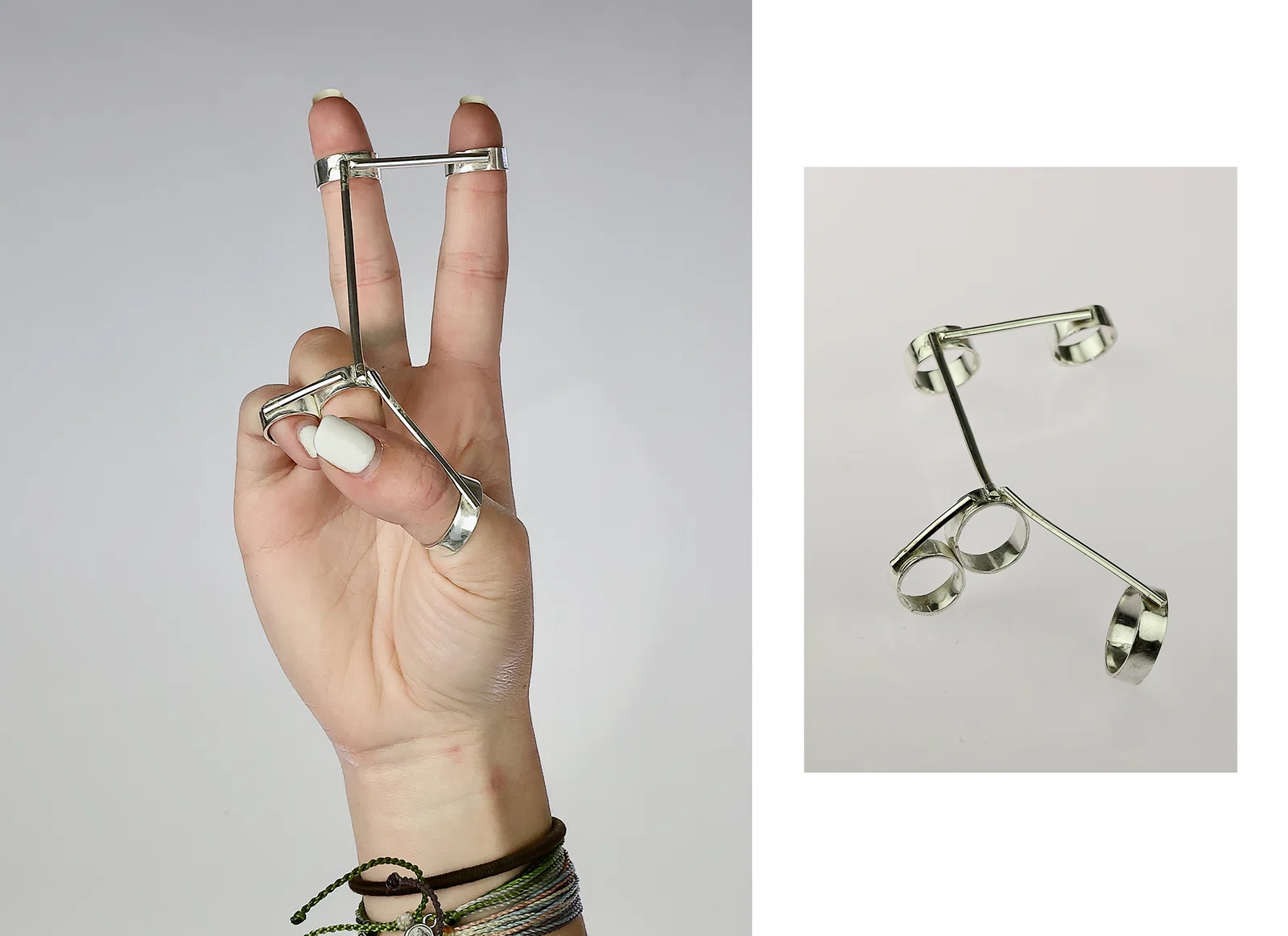
Height: 3 in. Width: 3 in. Depth: 1 in.
Material(s): Silver rings to capture the finger, silver wire as forced connections between the rings.
Process(es): Forging and creating rings, intertwining wire and rings together through heat and pressure.

Principal statement
Principal
statement
John Corrigan
The Arts at Detroit Country Day School are taken seriously and mean a great deal to our community. When I look at the works created by this group of students, some of which I am proud to say hang in my office for all the world to see, I am amazed. These young artists understand scope and dimension, but—and more importantly—they have captured the human condition. Whether it is the innocence represented in “
Alexis and Caitlin,” or the monotony of life represented in “New York City Rain,” or the juxtapositions I discover in “Voluntary Femininity” (2021 AP Art and Design Exhibit), I am struck by the maturity these artists demonstrate. Their works illustrate a clear empathy, which leaves me hopeful that our learners—led by the artists among us—will go forward and lead with purpose and humanity.
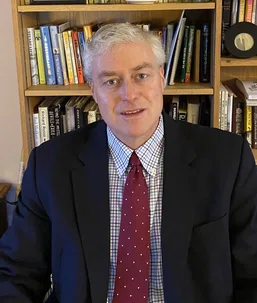
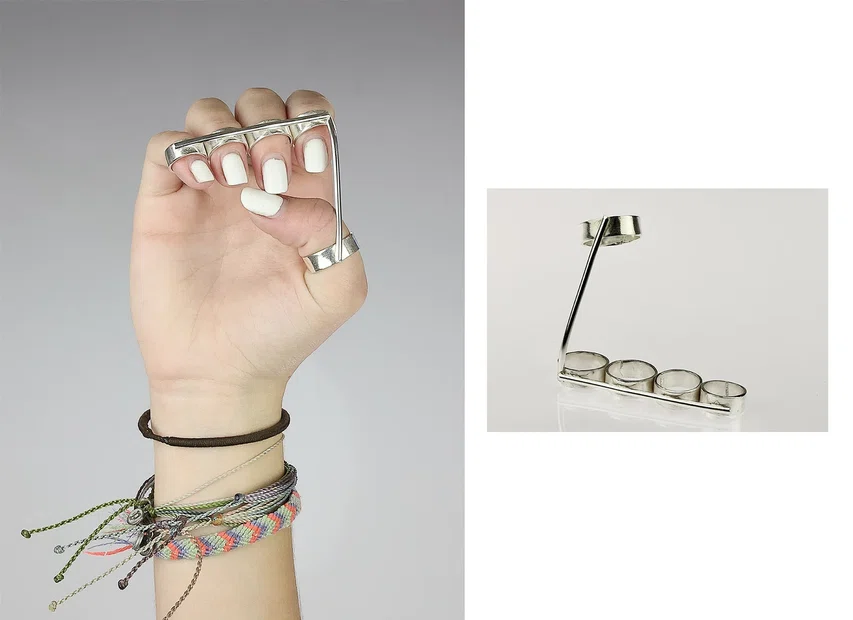
Height: 2 in. Width: 3 in. Depth: 1 in.
Material(s): Silver rings to capture the finger, silver wire as forced connections between the rings.
Process(es): Forging and creating rings, intertwining wire and rings together through heat and pressure.
Isabel Cleary














